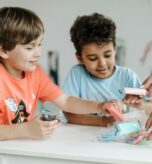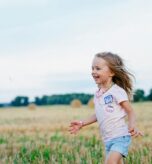Arts education in Finnish early childhood education is an essential component of holistic child development, fostering creativity, cultural awareness, and emotional well-being. This research explores how various art forms—crafts, dance, music, visual arts, and drama—are integrated into early childhood education through a guidebook published by the Finnish National Institute for Health and Welfare in 2009. Using qualitative content analysis, the study examines six central themes: aesthetics, creativity, culture, children’s culture, arts pedagogy, and the identity of early childhood educators.
The study highlights the role of aesthetic education as a meta-level framework for arts education, connecting artistic activities to values such as beauty, goodness, and wisdom. Each art form contributes to children’s sensory and emotional development, shaping their ability to appreciate and create art. The emphasis is on fostering an environment where children can engage with artistic experiences that enhance their perception, expression, and emotional growth.
Creativity is recognized as a fundamental aspect of children’s learning and self-expression. The study underscores the importance of imagination, play, improvisation, and storytelling in encouraging children to think creatively. Arts education provides opportunities for children to explore new ideas, take creative risks, and develop problem-solving skills. It also emphasizes the balance between structured artistic activities and open-ended exploration, ensuring that children can engage in meaningful self-expression.
Culture is another significant aspect of arts education, as it provides children with opportunities to engage with diverse traditions and perspectives. The research introduces the concept of a “third space,” where children can experience cultural encounters and redefine their own cultural identities. Arts education is portrayed as a bridge between different cultural backgrounds, fostering inclusivity, social interaction, and respect for diversity. The study also emphasizes that children should not only be passive recipients of culture but active participants who shape and transform cultural experiences through their artistic expressions.
In terms of arts pedagogy, the study identifies two main approaches. The creative process-oriented model encourages free exploration and self-expression, allowing children to engage with art in an unstructured manner. This approach focuses on the process of creation rather than the final product. On the other hand, the structured learning-based model emphasizes guided instruction, where educators play an active role in teaching artistic techniques and providing inspiration. Both approaches highlight the importance of experiential learning, where artistic activities are integrated into children’s everyday experiences.
The role of educators is crucial in facilitating arts education. Teachers are responsible for creating an environment that encourages artistic exploration while providing the necessary structure and support. They are not required to be specialists in arts education, but they must recognize the value of arts in early childhood development and incorporate artistic activities into their teaching. Educators act as facilitators, inspiring children’s creativity and helping them develop confidence in their artistic abilities. They also collaborate with cultural organizations and parents to create a more enriched arts education experience.
Finally, the study highlights the need for equitable access to arts education, particularly in rural areas where opportunities for artistic engagement may be limited. Ensuring that all children, regardless of location, have access to high-quality arts education is essential for fostering creativity, emotional well-being, and cultural engagement. The research suggests that cultural activities can play a crucial role in preventing social exclusion by providing children with meaningful ways to express themselves and connect with others.
Conclusion
Arts education in Finnish early childhood settings is deeply integrated into child development, encouraging creativity, cultural understanding, and emotional growth. The responsibility of educators in shaping an enriching arts education experience is emphasized, ensuring that children can freely express themselves and develop their creative abilities in a supportive and inspiring environment. By fostering an appreciation for aesthetics, encouraging imaginative exploration, and promoting cultural engagement, Finnish arts education provides a strong foundation for children’s holistic development.
Source: University of Helsinki. Heikki Ruismäki & Inkeri Ruokonen (Eds.). Arts and Skills—Source of Well-being. Third International Journal of Intercultural Arts Education. Research Report 330. Arts Education in Finnish Early Childhood Education. Sinikka Rusanen & Inkeri Ruokonen.




